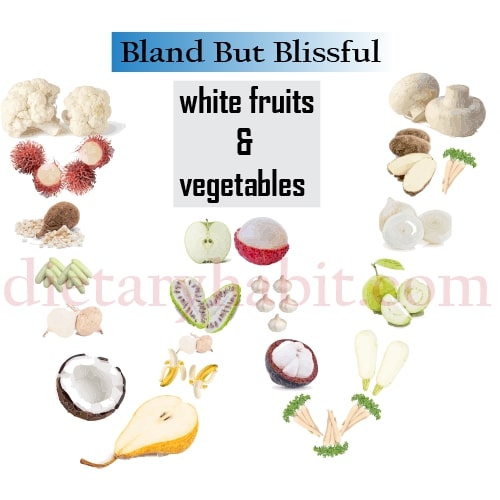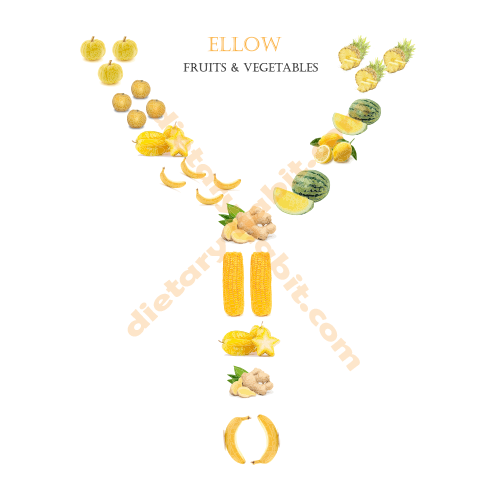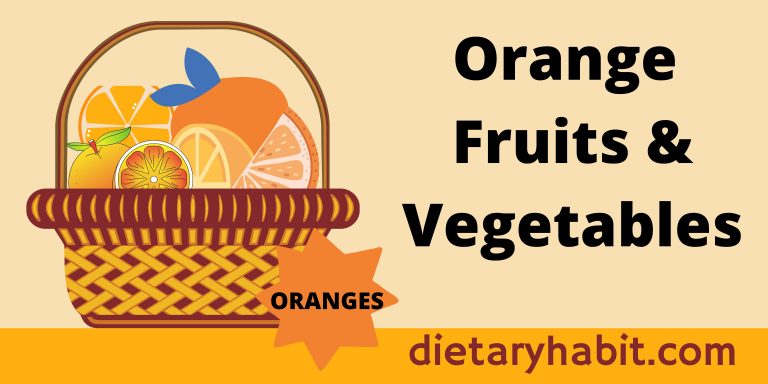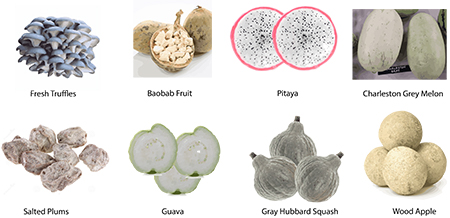Try 12 Best Blue Fruits and Vegetables To Boost Immunity
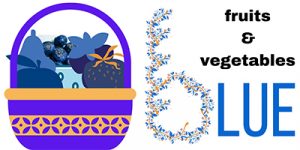
The blue or purple fad doesn’t seem to fade away soon. It’s now the latest fashion trend comprising an unusual approach. The regal color also represents majesty in every shade. You can experience serenity and tranquility by adopting blue fruits and vegetables to your diet plan.
The exciting thing is that the paint has a distinctive feature to help you support your weight loss plan. Blue fruits and vegetables are the best blue options to help you achieve such goals. Scientists found it to be the only color that can suppress your appetite.
No more avoidance of blue fruits & vegetables once you learn the health benefits of blue fruits and vegetables. It’s time to harness the potentials of blue. As you scroll by, you’ll get to know the benefits of eating rare but some of the most exotic blue fruits and vegetables. Switching between the rainbow foods like green, pink, yellow, orange, red fruits, or white vegetables will motivate a healthy eating habit.
Phytonutrients in Blue Fruits & Vegetables
Blue fruits and vegetables are rich in different phytochemicals. Some phytochemicals own coloring agents that result in various colors and diverse densities. Anthocyanin is responsible for blue and purple hues in foods. The color density depends on the number of anthocyanins a blue fruit or vegetable contains. The more it happens in the foods, the darker the blue fruits and vegetables.
Blue fruits & vegetables are the storehouses of powerful health-related phytochemicals. They contain, more or less, plenty of polyphenol compounds, including flavonoids, flavonols, procyanidins, phenolic acids, stilbenes, etc. But how exactly do these phytochemicals aid your immunity? We’ll get to know that one by one. But first, let’s learn about the specific polyphenol compounds as their functions vary greatly.
The most abundant anthocyanin belongs to the flavonoid group. The polyphenol compounds also indicate flavonols that include
- Kaempferol
- Quercetin
- Myricetin
- Isorhamnetin
Procyanidins are usually found in monomeric and oligomeric forms. Along with anthocyanin, proanthocyanins contribute to blue color fruits and vegetables, strengthening their disease-fighting capabilities. Anthocyanins have a powerful effect on bacterial sterilization. Scientists also found a positive role of resveratrol in preventing cancer.
Blue Fruits and Vegetables Availability
Blue fruits & vegetables aren’t a common sight for us. Only a few fruits are naturally available in blue, and blueberries are the most common. You may also find some purple-blue grapes if you intently search the market.
You’ll hardly find any blue leafy vegetables in the market, let alone blue meats or other fancy blue things. But scientists couldn’t resist implementing the blue power in fruits and vegetables. They bred some fruits and vegetables in the blue hue, and the blue food got famous.
However, blue has been regarded as a symbol of poisonous things for thousands of years. We can’t suppress our ancestor’s worry in a short time as it’s coded in our genome. We still carry those genes of fearing and avoiding blue things. Scientists found that if blue is painted on the plates or even on foods, it’ll suppress your appetite.
What Are Blue Fruits And Vegetables Good For
Purple or blue fruits and vegetables can boost your energetic lifestyle to a new limit if you can handle your meal plan smartly. Along with the vast range of expected benefits of fruits and vegetables, unique phytonutrients for blue color also provide some distinctive advantages.
As mentioned before, anthocyanins combat biotic and anti-biotic stresses. It protects the cells from being damaged by bacterial infections. Besides, anthocyanins play a significant role in reproductive health. Recently, research was conducted on mothers with preteen children to know the effect of blue or purple fruits and vegetables. The study suggests that polyphenol-rich foods such as grape juice enhance cognitive behavior greatly. Also, they boost your mood and driving performance. Want to strengthen your spatial memory? Jump-start to modify your meal plan by including blue fruits and vegetables.
Blue fruits and vegetables are rich in antioxidants, presumably more than other color varieties. They contain vitamin C, vitamin E, and other minerals in a considerable amount. You can benefit your gut by adding fibers as they prevent constipation and troubles of the bowel. They improve gastrointestinal health and boosts immunity.
Let’s sum up the benefits of blue or purple-hued fruits and vegetables in bullet points-
- Suppresses appetite and thus helps to lose weight
- Provide antibacterial functions
- Help in reproductive health of women
- Increases spatial memory
- Enhances cognitive power
- Better driving performance and mood
- Prevent cellular damage in oxidative stress
- Suppress appetite center and stimulated satiety center
- Protect from cancer
- Improves brain health
Which Fruits and Vegetables are Blue
1. Aubergine
Among the nightshade plants, aubergine is one of the most promising foods to build sound health. It offers not only nutrition but adds a unique texture to the food. Abundant dietary fibers slower the absorption of sugar to prevent any spike. It’s one of the natural blue fruits and vegetables with dark blue staining on its skin.
Season & Availability
Blue eggplant is available year-round. The purple tinge on the eggplant is due to the presence of anthocyanins. However, the best season to eat eggplants is the summer season because they’re the cheapest and freshest at this time. From July to September, blue eggplants should garnish your meal plate.
Taste & Texture
Intense taste doesn’t suit the aubergines. They have a relatively bland and mild flavor. However, mixed with fish oil, the flesh of aubergines can give off a delicious texture and taste. Try to avoid matured eggplants as they taste bitter in skin and seeds.
Nutritional Highlights
Nasunin, a form of anthocyanins, is responsible for the purple-blue color. It has enormous antioxidant activities in the brain and protects the lipid layers of the cell membrane. As eggplants are rich in phenolic compounds and dietary fibers, health authorities suggest adding them to the diet to reduce the risk of type 2 diabetes and high blood pressure.
2. Kale
Add some royal flavor to your salad by adding kale to the menu. From the tender green kale to red or purple kale, all are fantastic sources of nutrition. This purple beauty includes vitamins A and C, potassium, folate, iron, dietary fibers, etc. The antioxidant and anti-inflammatory activities are most appreciated.
Season & Availability
Kale is more of an ornamental vegetable. Sit tight as winter is coming and the temperature is dropping because purple kale loves to grow in the winter. It’s sown in August, and usually, farmers harvest it in the fall and winter when the leaves are longer. However, blue kale is one of the rarest blue color leafy vegetables.
Taste & Texture
Kale suits better in a salad platter for its ornamental look. Along with its cabbage-like flavor, you may get an earthy texture that can demotivate you from eating. Give it a try in stew and soups, and enjoy the chewy taste of blue kale.
Nutritional Highlights
Blue kale is packed with precious antioxidants like other leafy vegetables. It can bind with cholesterol and speed the excretion rate from your body. Blue kale on your plate will undoubtedly boost your immunity as it’s one of the densely packed food in the world.
3. Blueberries
It’s one of the most talked-about fruits that’s regarded as a superfood in the first place. And they have all the qualities to be considered so. The rich phytochemicals help prevent heart diseases and other chronic diseases. It may alleviate inflammatory disorders and any urinary tract infections. Blueberry is also among the naturally occurring blue fruits and vegetables abundant from the east to the west.
Season & Availability
In the era of cutting-edge genetic engineering technology, breeding blueberries year-round is a normal phenomenon. Plant the right species in your backyard and harvest the sweet results in time. But blueberries are produced in bulk from June to August. With blueberries comes the essence of summer.
Taste & Texture
Blueberry beautifully adorns the combo of sweet and sour flavor. Bite down the berries, and the juice will water your mouth with a mild sweet taste. Not overly sweet due to the presence of acidic compounds. If you try an unripe blueberry, prepare to brace the intense sourness from this adorable blueberry.
Nutritional Highlights
Blueberry is one of the most recognized sources of phytonutrients. It scored high in ORAC criteria for having a higher amount of anthocyanins. Eating blueberries every day can reduce the risks of myocardial disease formation.
4. Cocoa
From the Mayan civilization to the modern days, cocoa has evolved only to be more popular through its diverse uses. One of the most influential roles cocoa plays on health is reducing blood pressure, where nitric oxide relaxes the muscle wall. Dark chocolate may provide some but not all flavonoids due to the lengthy preparation processes.
Season & Availability
Cocoa yields main crops two times a year. It takes longer to grow, and the harvest time may range between May and August and from October to March. Cocoa is available year-round in the reach of average Joe.
Taste & Texture
Cocoa starts from cacao crops and ultimately transforms into chocolates. There is nobody who didn’t taste the chocolate flavor. Cacao flesh tastes sweet, yet they contain little tart flavor. It’s more like the coffee beans. Processed cocoa is sweet to taste when the unprocessed ones can give off a pungent taste.
Nutritional Highlights
Cocoa has densely packed theobromine that can back off any oxidative assaults on the cells. Cocoa intake may also reduce the risks of weight gain as they’re low in calories but high in dietary fibers. If you want a more functional brain with high efficiency, start taking cocoa every day to increase cerebral blood flow by manifolds.
5. Purple grapes
Grapes are found worldwide and are famous for their jam-packed health benefits. This purple fruit can rejuvenate your wrinkled skin through antioxidant activities because it contains hydrogen peroxide in peroxisome that oxidizes all extra free radicals.
Season & Availability
There are variations in the harvest time of grapes. It usually ranges from May to October, peaking in September at the production level. Purple or blue grapes are also available at that time. Though not in abundance, you may still manage to collect these aesthetically eerie blue fruits.
Taste & Texture
Purple grapes taste just like other grapes, with mild sweetness and little sourness. Grapes with seeds offer more flavor variations, so they’re primarily used in the production of jam and jelly.
Nutritional Highlights
Grapes are densely packed with plenty of phytonutrients, most significantly antioxidants. Building a habit of eating grapes can boost up your immune system. They energize the cells and restrain the aging process. Grapes are a good package for a healthy life.
6. Cherries
Blue cherries aren’t quite beautiful to look at. What more! They contain some amazing kinds of stuff that can prevent inflammation in the joints. They prevent gouts and help you sleep sound. Athletes can find it useful as cherries boost their performance. This red fruit helps in recovery from muscle pain after exercise.
Season & Availability
They normally fruit in the summer. The harvest season ranges from mid-April to June. Cherries are known to be the first fruit harvested in the seasons.
Taste & Texture
Blue cherry tastes almost the same as red cherries. They can be intensely sweet whether some varieties contain a balanced taste, including a bit of tartness.
Nutritional Highlights
Cherry fruit is a great source of antioxidants. The immense water content of a cup of cherries can hydrate you efficiently. Drinking cherry juice can be a new way to rejuvenate your life.
7. Apples
An apple a day keeps the doctor away. This proverbial sentence signifies adding apples to your meal plate. Apples are densely packed with numerous minerals and other nutrients. Hence they are friendly for diabetic patients. The antioxidants may play a role in lowering cholesterol levels and preventing cancer.
Season & Availability
Blue apples are rare to find. But they are as real as the red and pink apples. They can be precious due to their unorthodox blue hue but are scarce in production.
Taste & Texture
Blue apples may look poisonous and unattractive to eat, but they contain some unique phytonutrients. They are sweet balanced with a slight tartness.
Nutritional Highlights
Blue apples don’t have very different nutritional benefits. But they can affect you mentally for their dominant blue color. If you can eat it with joy, it’ll bring you the reward for ultimate gluttony.
8. Purple potatoes
The vibrant color of this purple vegetable is pretty amusing. But where does it get such a pretty face? The mighty power behind this color is an antioxidant, anthocyanin. The powerful action of these veggies prevents any inflammation or infection from happening in your immune system. They also play a cancer-fighting role and prevent life-threatening chronic diseases.
Season & Availability
Don’t misinterpret purple potatoes as a breed from the laboratory. They are 100% natural in production and get such color due to the presence of anthocyanin. You might find blue or purple potatoes all along the calendar year, but they are most abundant in the fall.
Taste & Texture
Purple potatoes need more time than regular potatoes. Hence they get drier and starchy. To get the genuine taste of purple potato, you need to boil it longer. Surprisingly, their flavor is more likely of wine, and they can be mildly sweet.
Nutritional Highlights
Potatoes are exclusively known for their rich carbohydrates content. However, potatoes can be beneficial to maintain a healthy dietary habit. Blue potatoes can help you a lot as they contain more antioxidants in the place of less occurring carbohydrates.
9. Strawberries
The heart-shaped size suggests that one should pick this fruit to maintain a healthy heart. This potent little package is a powerhouse of antioxidants. Strawberry can increase the good cholesterol and scavenges the bad cholesterol. It also lowers hypertension and protects against cancer.
Season & Availability
Blue strawberries are common among those who eat with a style sense. They can be the bluest in the truest sense. But they aren’t bred in great quantity as not many people like them.
Taste & Texture
Strawberry tastes very sweet when it melts with the touch of the tongue. If you peak strawberry in the unripe stage, it’ll show a bit of tartness, which is quite enjoyable. It has quite a delicious texture to add to your plate.
Nutritional Highlights
Strawberry is a good example of a healthy fruit adorned with all kinds of essential proteins and minerals. Blue strawberries aren’t a common product. But if you manage to get one, just grab it as they’re uniquely bold in the color blue.
10. Turnips
From notoriety in the middle ages to fame in modern times, turnip is always proven to be healthy food. The high dietary contents and low-calorie density are perfect for a good diet. It maintains your colon health as turnips facilitate the defecation reflex.
Season & Availability
Turnips are usually harvested in the fall and winter seasons, avoiding the heat of summer. You’ll start to find blue turnips fresh and cheap from August to February. Though the blue turnip is a rare sight, the nutritionist hugely applauded it.
Taste & Texture
The starchy flesh of blue turnip tastes crispy and sometimes comes with earthy flavors. On an overall note, turnips seem sweet but nutty in flavor that can be quite delicious as an add-on.
Nutritional Highlights
Turnip can be very effective if you want to improve your skin and hair conditions. It contains a plethora of vitamin A which is essential for collagen synthesis. It nourishes the hair follicles and keeps the skin bright and vivid.
11. Beets
This delicious purple food is easy to add to your diet chart. Beet contains multiple phytonutrients, minerals, vitamins, and other plant compounds that have an extremely positive effect on health. The high water contents and low-calorie density properties are useful for a weight loss diet.
Season & Availability
Blue beets aren’t common in the market. It needs an artificial extraction process to make it color blue. They are suitable to grow in the cold seasons. Usually, beetroots are grown in the late fall.
Taste & Texture
The taste varies depending on the types of beets and how you cook them. It can be bitter and sweet, but you can diminish the intensity by adding salts and other ingredients.
Nutritional Highlights
Beetroots show good effects on athletic performance as they delay the onset of fatigue and tiredness. Studies suggest a strong correlation between beetroots consumption and increased athletic performance. Nitric oxide contents contribute to this highlight by dilating the blood vessels to increase more passing of oxygen and other materials.
12. Purple carrots
There are color variations of carrots. So do the nutrition it carries. But what’s special about these purple carrots? Purple carrot shows more antiradical activities than the others. Lycopene and other anthocyanin prevent clotting in vessels and thus prevent heart diseases. The color pigments also play a role in cancer protection. Blue fruits and vegetables are the maternal brothers of purple foods. So it’s justifiable to add this purple beauty to the list of blue fruits and vegetables.
Season & Availability
According to the climate of various states, the availability of blue and purple carrots may vary greatly. It can be found year-round in the state of California. But it’s the late month in the fall when they’re available in the northern states.
Taste & Texture
Carrots aren’t sweet, and they’re not in the bitter group. But sometimes, they can come with a strong sweet flavor with an earthy input. However, you may find a pepper-like taste in the purple carrots.
Nutritional Highlights
Carrots are one of the most promising foods positioned next to superfoods. They contain plenty of antioxidants and other essential nutrients. If you want a healthy start to your day, try adding purple carrots to your diet for their exquisite antioxidant properties.
Drawing Inferences
Blue fruits and vegetables are hard to find in the market, and they’re not common as the regular ones. They also have a demotivating power in suppressing your appetite. But you can always find a way to harness the potentials of blue fruits and vegetables. They are greatly enriched in antioxidant and anti-inflammatory properties due to the prevalence of anthocyanins. Try to adorn your meal plate with these healthy foods and build a habit of eating them regularly. This habit will improve your immunity by manifolds and help you to lead life happily.

